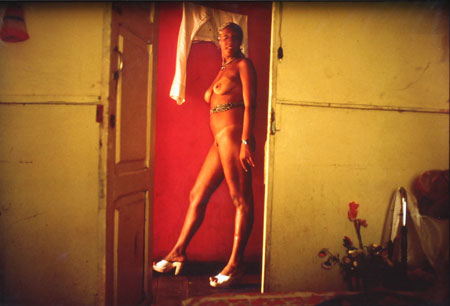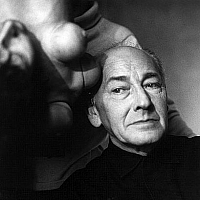
Galerie 1900-2000 Galerie 1900-2000 8 rue Bonaparte 75006 Paris France Tél: +33(0)1 . 43258420 Fax: +33(0)1 . 46347452 www.galerie1900-2000.com info@galerie1900-2000.com Horaires d'ouverture: Mon 14-19, Tue-Sat 10-12.30 + 14-19
Mois de la photo 2010 Point information 5,7 rue de Fourcy 75004 Paris France
Sexual images are very commonplace today – at least in western society. Nowadays, they are digital images, and this transformation has only served to increase their number and make them easier to distribute. It has “improved” their technical quality, as computer programmes are able to retouch, add to and subtract from them. Light and colour are similarly artificially created. Male and female bodies with the appropriate vital statistics, cameras and computers: this is all that's required to make fixed or moving images of all possible sexual permutations, according to the number of people taking part. The more people there are, the more complex the permutations are: you just have to do the maths.
You start with 2 people, and you end up with 4 or 5 according to your budget. Pornography is sexuality controlled by numbers, and plausibility is not an issue.
The photographs presented here have nothing in common with this image industry; in fact, they are the exact opposite. Most of them only show one body. They are mostly small-format black and white prints. Instead of the perfection of software, we have the empirical and perilous manipulations of a man who, for instance, works only with his own body and that of his mistress, with a few accessories: silk stockings, scissors, and mediumquality printing equipment. This man, whose work we never tire of looking at, is Pierre Molinier. There's a perfect correspondence between his desires and the forms he projects them into: private, hard-to-admit-to desires, and small images that will fit into the palm of one's hand or slip between the pages of a little book – as Hans Bellmer suggests. He, too, is empirical, and a “bricoleur” – first making his doll, then creating the settings for her. She doesn't look real, and deceives no one: this is not about producing a detailed, close-up representation of a sex act, but about drawing the hieroglyphics of desire and pleasure.
The abstraction of black and white contributes to this. Man Ray famously used its properties to marvellous effect. Florence Henri joins forces with the surrealists, making a version of the motif of the “fainting lady” that is all the more captivating because the flowers that surround her are not purely decorative.
These are, assuredly, mental images. They engrave themselves on our memories in a way that current pornographic imagery cannot: the latter is interchangeable, instantly forgotten. It is thus only natural that the living artists who find themselves in such fine company - Annie Leibowitz, Jean Jacques Lebel and Miguel Rio Blanco - only allude to this industry in ironic terms, with humour or parody.







